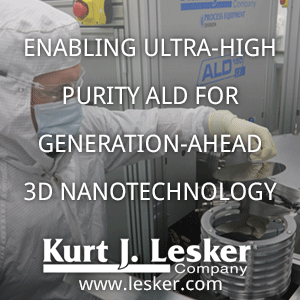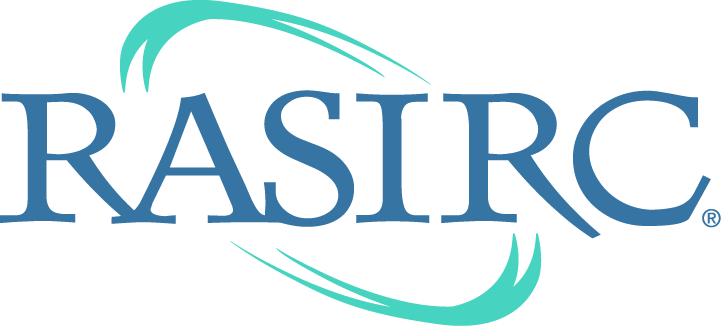Monday 25 July, Monday 25 July
Thermal ALE |
|
| 10:45-12:15 Liffey Hall 1 Workshop: Thermal ALE Chair: to be confirmed |
|
| O17 | Developments in Thermal Atomic Layer Etching Using Sequential, Self-limiting Reactions Steven George*, Younghee Lee, Jaime DuMont, Nicholas Johnson, Amy Marquardt University of Colorado, USA 10:45-11:15 |
| O18 | Isotropic atomic layer etching of silicon nitride for 3D device applications Kazunori Shinoda*1, Nobuya Miyoshi1, Hiroyuki Kobayashi1, Masaru Kurihara1, Tadamitsu Kanekiyo2, Masaru Izawa2, Kenji Ishikawa3, Masaru Hori3 1Hitachi, Japan, 2Hitachi High-Technologies, Japan, 3Nagoya University, Japan 11:15-11:45 |
| O19 | Low-Temperature Selective Tungsten Hexafluoride Chemical Vapor Etching of TiO2 Films Paul Lemaire*, Gregory Parsons North Carolina State University, USA 11:45-12:00 |
| O20 | A two-step atomic layer etching process on MoS2 realized by remote O2 plasma Hui Zhu, Xiaoye Qin, Lanxia Cheng, ANgelica Azcatl, Jiyoung Kim, Robert Wallace* University of Texas at Dallas, USA 12:00-12:15 |
Non-traditional ALE approaches |
|
| 13:45-15:15 Liffey Hall 1 Workshop: Non-traditional ALE approaches Chair: to be confirmed |
|
| O32 | Longitudinal nanowire splitting by atomic layer etching DMITRY B. SUYATIN*, MD SABBIR AHMED KHAN, JONAS SUNDQVIST, ANDERS KVENNEFORS, MARIUSZ GRACZYK, NICKLAS NILSSON, IVAN MAXIMOV Lund University, Sweden 13:45-14:00 |
| O33 | A novel atomic layer etching of SiO2 with alternating O2 plasma with fluorocarbon film deposition Takayoshi Tsutsumi*1, Masaru Zaitsu2, Akiko Kobayashi2, Hiroki Kondo1, Toshihisa Nozawa2, Nobuyoshi Kobayashi2, Masaru Hori1 1Nagoya University, Japan, 2ASM Japan K. K., Japan 14:00-14:15 |
| O34 | Towards wet-chemical atomic layer etching of III-V and Ge for N7 and N5 technology nodes Dennis H. van Dorp*, Sophia Arnauts, David Weinberger, Farid Sebaai, Niamh Waldron, Frank Holsteyns Imec, Belgium 14:15-14:45 |
| O35 | Accelerated Neutral Atom Beam Procssing for Atomic Level Etch Craig Huffman*1, Francis Goodwin1, Satyavolu Papa Rao1, Brendan O'Brien1, Edward Barth1,4, Saikumar Vivekanand3, Martin Rodgers3, Sean Kirkpatrick2, Michael Walsh2,4, Richard Svrluga2,4 1SUNYPoly SEMATECH, USA, 2Exogenisis Corporation, USA, 3CNSE SUNYPoly, USA, 4Neutral Physics Corporation, USA 14:45-15:00 |
| O36 | InGaAs Atomic Layer Etching Jinwoo Park*, Geunyoung Yeom Sungkyunkwan University, Republic of Korea 15:00-15:15 |
Advances in applications and hardware of ALE |
|
| 15:45-17:15 Liffey Hall 1 Workshop: Advances in applications and hardware of ALE Chair: to be confirmed |
|
| O48 | Plasma source configuration impact on surface processes for high precision etch Akira Koshiishi*1, Alok Ranjan2, Peter Ventzek3 1Tokyo Electron Miyagi Ltd., Japan, 2TEL Technology Center, America, LLC, USA, 3Tokyo Electron America, Inc., USA 15:45-16:15 |
| O49 | Electron Beam Generated Plasmas: An ultra low Te route toward ALEt David Boris*, George Petrov, Tzvetelina Petrova, Scott Walton U.S. Naval Research Laboratory, USA 16:15-16:30 |
| O50 | Investigating the role of neutral transport in ALE and RIE processes using a 3-dimensional Monte Carlo Feature Profile Model Chad M. Huard*1, Mark J. Kushner1, Yiting Zhang2, Saravanapriyan Sriraman2, Alex Paterson2 1University of Michigan, USA, 2Lam Research Corp., USA 16:30-16:45 |
| O51 | Atomic layer processing by conventional and low electron temperature plasma sources: a feasibility study Hiroyuki Miyazoe*1, Ashish Jagtiani1, Josephine Chang1, Demon Farmer1, Michael Engel1, Deborah Neumayer1, Shu-Jen Han1, Sebastian Engelmann1, David Boris2, Sandora Hernández2, Evgeniya Lock2, Scott Walton2, Eric Joseph0 1IBM TJ Watson Research Center, USA, 2Naval Research Laboratory, USA 16:45-17:00 |
| O52 | Atomic Layer Etching of Silicon Nitride using Hydrofluorocarbon Chemistry Yohei Ishii*, Kazumasa Okuma, Tiffany Saldana, Nobuyuki Negishi, Jim Manos Hitachi High Technologies America, Inc., USA 17:00-17:15 |



%20(1).png)




















